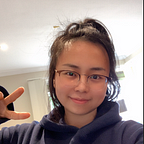I always find User Story Mapping can help me to think big for a new product or a new feature for an existing product. And it allows me to think of more innovative ideas.
What is user story mapping?
Story Mapping is an agile technique for visualizing the product scope and facilitating discussions on user journey, goals, scope, priorities and releases.
When shall we use user story mapping?
- Facilitation of discovery workshops
- Building your product backlog
- Facilitation of prioritization
- Release planning
- Delivery progress tracking
How to create user story mapping?
Let’s take a real-life example.
Imagine that you are the persona shown below, suppose that you get up at 7:30 am in the morning every day, what tasks do you need to do to get prepared to go out for work? I know that most of us are working from home currently, let’s imagine life back in 2019.
There are two ways to create a user story map.
- List all the user tasks and then group them to come out backbones(the main journey)
While I hosting in-person workshops, some teams are really clear about the detailed user tasks, for example. “Mary needs to cook breakfast”, “Mary needs to make morning coffees” and etc.
First, I will ask them to list all the user tasks on the wall, one task per sticker.
Second, I will ask them to group these user tasks into groups and give each group a name.
- Some teams find it very easy to group by a different location
- Some teams feel like to group by timeline
Other teams may have different ideas, there is no right or wrong, as they group them, they may come out the new ideas about the user tasks, also they may discover a better way to group and name the backbones.
2. List the backbones(the main journey) first and then add the detailed user tasks.
Some teams are really good at coming out of the main journey first and then think about the detailed user tasks for each of the “bones” on the top.
while they list the main journey, they can realise that the sequence needs to be adjusted. For example, Mary may want to get things done before she needs to deal with the kids and dogs, this will be more efficient.
What is MVP?
Imaging Mary got up late one day, she needs to get ready in 15 minutes to get out. Then what tasks Mary will do to get ready quickly? She might need to give up yoga, she may need to ask her husband to take care of the kid and the dog. In short, she could only do the minimum tasks needed to get ready.
Let’s get back to our product world. When you do product discoveries, you can choose the way suits your team well to create a user story mapping. This will depend on how much business context does your team has and which way the team is comfortable with. And same as the example above, the backbones are really helpful for the team to engaging, thinking from a big picture and coming out with new ideas. The more you use this technique, the more you will find it is fascinating.
Tips and Tricks
Finally, if you want to host a user story mapping workshop, here are some tips,
- Collaborate with stakeholders, involve all key roles
- Note assumptions, follow-ups, clarifications, open points
- Signify different levels of story map with different colour themes (stickies)
- Put a product vision board up there, make sure everyone is clear about the goals, objectives of the product
- Create Persona template before the workshop
If you are interested, you can have a look at the webinar of one of my workshops hosted with my ex-colleague in Fabric Group. https://www.youtube.com/watch?v=8LBaAuSrVKw
